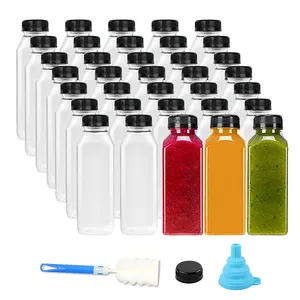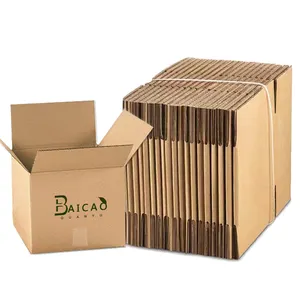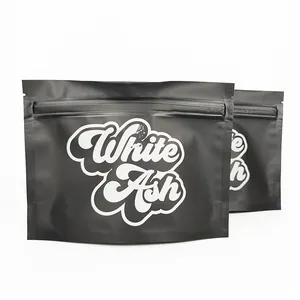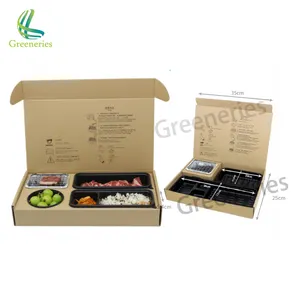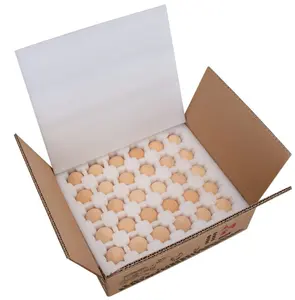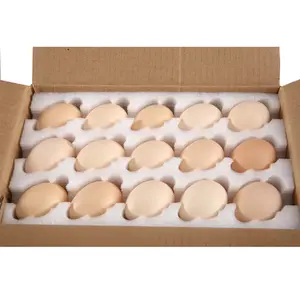Popular in your industry




















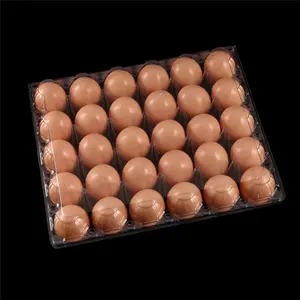
























































































































































Top categories
About egg packing foam
The Essence of Foam Egg Packaging
Foam egg packaging is a bespoke solution crafted to shield eggs from the rigors of transport and handling. These materials are engineered with precision to cushion and protect the fragile shells, thereby minimizing breakage. The cardinal purpose of foam egg packaging is to preserve the eggs' structural integrity and shield them from potential transit damage. This packaging is indispensable for consumers buying eggs at supermarkets and for enterprises such as eateries and food service providers that depend on the unscathed delivery of eggs for their daily operations.
The architecture of foam egg packaging hinges on the concept of shock absorption. Commonly constructed from expanded polystyrene (EPS), polyethylene foam (PE), or a blend of the two, these materials boast superior protective qualities. They are lightweight, insulative, and robust, making them exemplary for defending eggs against external pressures. The packaging is meticulously tailored to meet the eggs' specific needs, ensuring their freshness and integrity upon reaching the final consumer.
Foam egg packaging is aimed at egg producers, distributors, retail chains, and any entity within the egg supply network. These solutions can be personalized in a multitude of shapes and sizes to fit varying egg quantities and can be emblazoned with logos or promotional messages. Foam egg packaging not only augments egg safety but also offers businesses a chance to enhance their brand identity through strategic packaging decisions.
Varieties of Foam Egg Packaging
The spectrum of foam egg packaging encompasses a range of types tailored to meet diverse packaging demands. The variety stems from differences in material composition, design nuances, and functional imperatives.
-
Anti-Collision Foam Packaging: This variant prioritizes buffering eggs from impacts that could lead to cracks during transit. The foam in anti-collision packaging is often derived from materials such as EVA or cross-linked polyethylene, known for their superior shock-absorbing properties.
-
Waterproof Foam Packaging: Suited for items sensitive to moisture, waterproof foam packaging acts as a barrier against water penetration. This type is frequently employed for goods like electronics or pharmaceuticals that require a dry environment.
-
High Strength Foam Packaging: For enhanced protection, high strength foam packaging provides greater rigidity and longevity. This variant is apt for weightier goods or when additional safeguarding is necessary for high-value items.
-
Recyclable Foam Packaging: In response to ecological concerns, recyclable foam packaging options are available. These are typically made from recycled materials such as PET or EPS and can be repurposed or recycled post-use.
-
Customized Foam Packaging: Conforming to particular product needs or branding strategies, customized foam packaging permits distinctive shapes, sizes, and hues. These are prevalent for promotional events or special occasions where unique presentation is paramount.
Selecting Suitable Foam Egg Packaging
Choosing the appropriate foam egg packaging entails a consideration of several factors that correspond with your business's specific requirements and the nature of the product to be encased.
Initially, evaluate the product's fragility: for delicate commodities like eggs, opt for packaging that ensures high shock resistance and minimal displacement. Contemplate the transportation distances and storage durations the eggs will endure.
Secondly, environmental elements are influential: if the product necessitates insulation from temperature fluctuations or protection from moisture, select packaging that provides these protective features.
Finally, presentation matters: if the packaging is to be part of a gift set or displayed in retail settings, choose a design that is aesthetically pleasing and can be tailored with branding or messaging.
Discovering Foam Egg Packaging on Alibaba.com
Alibaba.com emerges as a pivotal marketplace for enterprises in search of dependable foam egg packaging suppliers. Offering a vast array of choices from international vendors, Alibaba.com streamlines the search for packaging that meets diverse business needs and is compatible with various egg types, from petite quail eggs to sizable ostrich eggs.
The platform's user-friendly interface, which supports mobile and multilingual interactions, is particularly beneficial for businesses. This ease of use expedites the selection process, allowing buyers to peruse a broad spectrum of foam egg packaging options effectively. Moreover, features like Trade Assurance bolster buyer confidence by protecting payments until the satisfaction of order delivery is verified.
Alibaba.com's dedication to the prosperity of small and medium-sized enterprises is manifest in its comprehensive trade solutions. The platform offers these businesses a conduit to connect with suppliers capable of fulfilling bespoke foam egg packaging needs without sacrificing quality or convenience. Whether seeking eco-conscious options or high-volume trays for extensive distribution, Alibaba.com is the quintessential resource for all foam egg packaging requirements.
Frequently Asked Questions on Foam Egg Packaging
What advantages does foam egg packaging offer?
Foam egg packaging ensures robust protection for fragile goods, diminishes the likelihood of breakage during transit, and offers benefits such as being lightweight and insulative, which can lead to cost savings and heightened consumer satisfaction.
Is it possible to tailor foam egg packaging to my business's needs?
Absolutely, numerous suppliers provide customization services for foam egg packaging to address specific business needs and product dimensions.
Does foam egg packaging align with eco-friendly and recyclable standards?
Certain foam egg packaging options are recyclable; this depends on the foam type and its biodegradability. It is advisable to consult with suppliers regarding their specific products and their environmental attributes.
How do I ascertain the correct foam egg packaging for my product?
Identifying the right foam egg packaging involves contemplating your product's size and form, the degree of protection needed during shipment, whether the packaging must be moisture-resistant or insulative, and any supplementary features that may be advantageous for your application.
Are there various grades of foam egg packaging at my disposal?
Indeed, there are multiple grades of foam egg packaging that cater to a range of product protection needs and environmental considerations. It is crucial to discuss these needs with suppliers to ensure the selected grade fulfills your packaging criteria.
Can foam egg packaging be utilized for products within both hot and cold supply chains?
Certain foam egg packaging types are engineered for temperature-sensitive products. These are typically crafted from high-density foams that maintain the requisite temperature throughout transportation.
What should I take into account regarding shock resistance when selecting foam egg packaging?
In evaluating shock resistance, consider the foam material's quality, its compressive strength, and whether the packaging is intended for protective casings or inserts. Premium materials and construction are vital for items that will encounter impacts during shipping.
How does foam density impact packaging performance?
Foam density influences its compressive strength, insulative properties, and durability. Denser foams usually provide superior protection but may be more expensive than their less dense counterparts.
Are foam egg packaging options available in different sizes?
Yes, foam egg packaging comes in an assortment of sizes to suit various product dimensions and shapes. Selecting the correct size is crucial to ensure sufficient protection and a proper fit for your items.
What distinguishes EPS from EPP foam egg packaging?
EPS (Expanded Polystyrene) is known for its rigidity and lightness, making it suitable for heavier items and providing insulation during transit. EPP (Expanded Polypropylene), on the other hand, is more pliable and excels in cushioning and shock absorption, ideal for delicate items or electronic devices.


